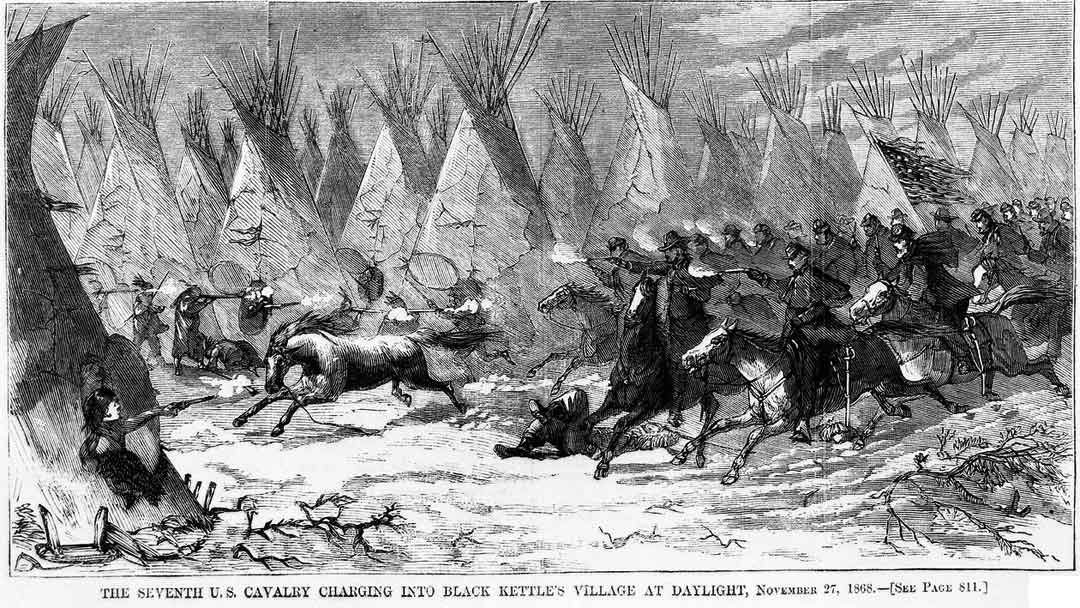Battle of Black Kettle Island / Battle of Washita River

In November 1869, Army troops from three separate forts were dispatched to attack hostile Indian camps in the Oklahoma Panhandle. The most devastating attack was made by the troops of the 7th cavalry led by Lt. Colonel Custer. The cavalry inflicted severe damaged on the Southern Cheyenne before withdrawing. The US army lost 21 soldiers killed.
In October 1867 the Medicine Lodge Treaty was signed with the between the United States government and the Kiwa and Comache tribes, the Kiowa-Aache Tribes and the Southern Cheyenne and Arpaapho Tribes. Under the treaty the Native American were obligated to move south to reservations in the Oklahoma Territory. Not all the members of the tribes accepted the treaty and Indian raiding parties continued to raid white settlements in Kansas and Colorado.
The US army sent out soldiers to capture or kill the Indian braves that had been attacking the settlers. Meanwhile Indian chief Black Kettle and others met with army commanders at Fort Cobb and told them they wished peace and would try to control the Indian braves that were attacking the settlers. They went as far as to say they would turn them over to the army.
The Indian braves returned from raiding parties at about the same time that Black Kettle returned to his village. Many of them either rode through the village or stopped their overnight to rest. At the same time scouts for General Custer 7th calvary were following the trail of the raiding party and tracked them to Black Kettle’s village . On November 27 Custer force attacked the village destroying much of it and killing Black Kettle his wife and about 120 other Native Americans while suffering 21 casualties among his soldiers.
 >
>